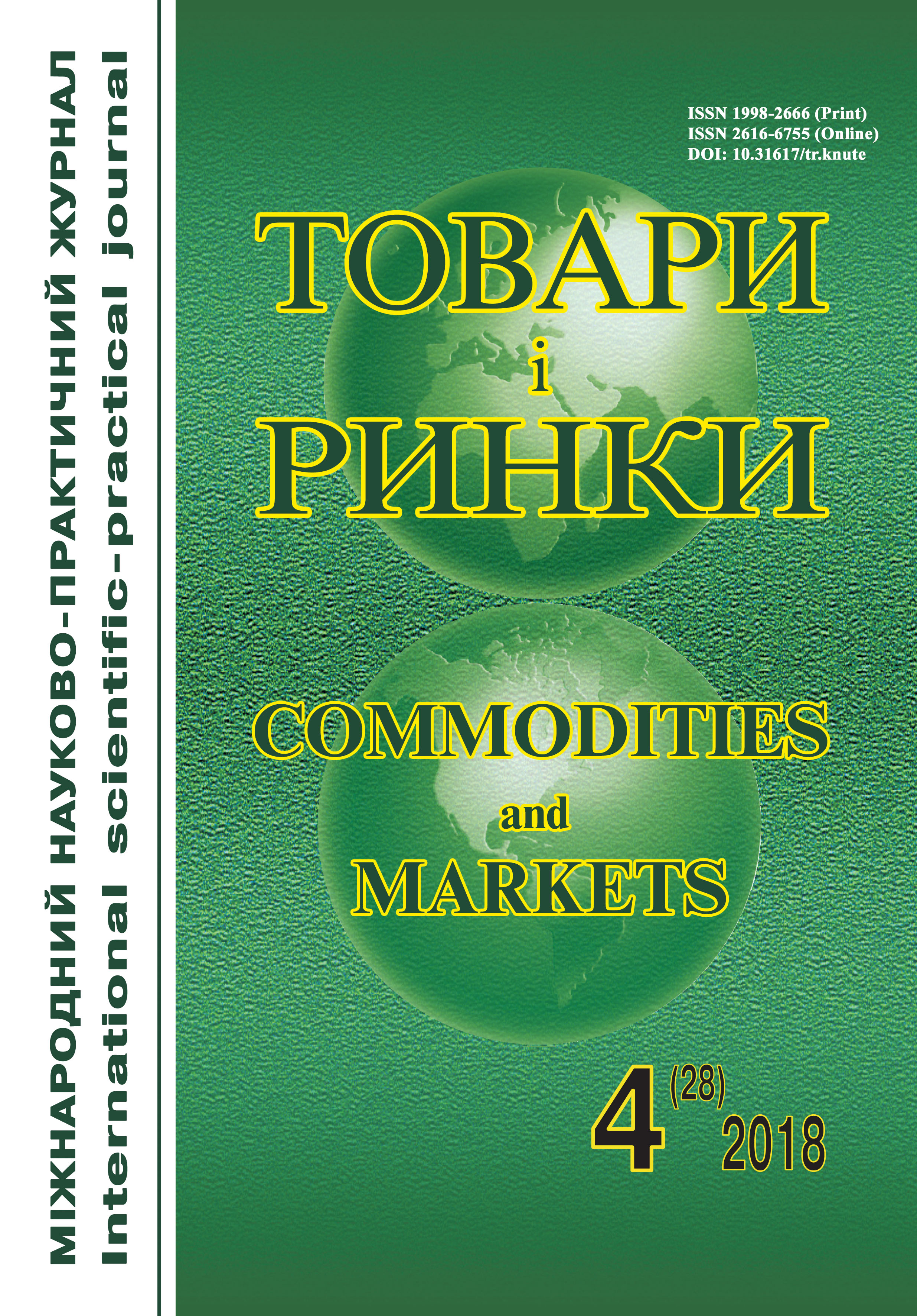Technology of gluten-free bakery products
Keywords:
gluten, celiac disease, wheat flour, corn flour, rice flourAbstract
Background. To organize gluten-free diet for patients with celiac disease in our country is rather difficult. A wide range of gluten-free products, which replaces bread, flour, cereals, cookies, pasta, etc., is produced abroad. Recently, the demand of the Ukrainian population for flour confectionery and bakery gluten-free products has increased, and their production continues to be an actual problem for bakers and scientists in the twenty-first century.
The aim of the study is to provide scientific substantiation and development of technology of gluten-free vanilla buns using corn and rice flour.
Material and methods. The object of the research is the technology of bun with the use of gluten-free flour types – corn and rice. For the development of technology of gluten-free bakery products, the recipes and technology of vanilla flour and wheat flour are selected for control.
The organoleptic evaluation of the samples of baked buns was carried out on a 5-point scale by a tasting commission consisting of five specialists.
Results. The test doughs made it possible to understand its behavior with complete replacement of wheat flour for corn and rice. Those provide baked yarn dough products with greater fragility and tenderness; it does not grow so much in volume as dough out of wheat flour. That is why in the studied dough it was decided to add corn starch (20 % of the total amount of flour) to increase the lifting of the dough while baking and giving the finished products an attractive appearance and splendor.
Based on the organoleptic evaluation, an optimal ratio of corn, rice flour and starch (40: 40: 20) was determined and a technological scheme for the production of the gluten-free vanilla buns was developed, from which the sugar was completely removed.
Conclusion. The optimal ratio of corn and rice flour and corn starch has been determined and the corresponding technological scheme of production of the gluten-free vanilla buns has been developed. Such products can be recommended to be introduced into the diet of people with celiac disease.
In further researches it is planned to determine the physico-chemical parameters of the developed gluten-free vanilla buns with the recipe N 3, and its introduction into production in restaurants.
References
Naumova, O. A. (2010). Osobennosti pitanija bol'nyh celiakiej [Features of nutrition for patients with celiac disease]. Suchasnі medichnі tehnologії – Modern medical technologies, 2, 124-127 [in Ukrainian].
Elke, A., & Dal Bello F. (2009). Science of Gluten-Free Foods and Beverages. Retrieved from https://www.elsevier.com/books/science-of-gluten-free-foods-andbeverages/arendt/978-1-891127-67-0 [in English].
Perlmutter, D., & Loberg, K. (2013). Grain brain: the surprising truth about wheat, carbs, and sugar – your brain's silent killers. New York, USA : Little, Brown і Company. Р. 336 [in English].
Goodchild van Hilten, L. (2015). How digesting bread and pasta could be affecting our brains. Retrieved from https://www.elsevier.com/connect/how-digesting-breadand-pasta-could-be-affecting-our-brains [in English].
Jeffery, C., & Atwell, W. (2016). Gluten-Free Baked Products. Woodhead Publishing. Retrieved from https://www.elsevier.com/books/gluten-free-baked-products/casper/978-1-891127-80-9 [in English].
Mancebo, C., Merino, C., Martínez, M., Gómez, M. (2015). Mixture design of rice flour, maize starch and wheat starch for optimization of gluten free bread quality. US National Library of Medicine. Vol. 52 (10). Retrieved from https://www.ncbi.nlm.nih.gov/pmc/articles/PMC4573150 [in Englih].
Rooney, L. W., & Serna-Saldivar, S. (2016). Tortillas: Wheat Flour and Corn Products. Retrieved from https://www.elsevier.com/books/tortillas-wheat-flour-andcorn-products/rooney/978-1-891127-88-5 [in English].
Serna-Saldivar, S. (2018). Corn: Chemistry and Technology. Academic Press. P. 690 [in English].
Watson, R., Preedy, V., Zibadi, Sh. (2014). Wheat and Rice in Disease Prevention and Health. Academic Press. P. 576 [in English].
Bhattacharya, K. (2011). Rice Quality. Woodhead Publishing. P. 608 [in English].
Koehler, P., Wieser, H., Konitzer, K. (2014). Celiac Disease and Gluten. Academic Press. P. 264. Retrieved from https://www.elsevier.com/books/celiac-disease-andgluten/koehler/978-0-12-420220-7 [in English].
Ryan O’Malley. Pasta Made From Green Banana Flour a Tasty Alternative for GlutenFree Diets. Retrieved from https://www.elsevier.com/about/press-releases/researchand-journals/pasta-made-from-green-banana-flour-a-tasty-alternative-for-gluten-freediets [in English].
The Gluten-Free Diet: Building the Grocery List. Academy of nutrition and dietetics.
Retrieved from https://www.eatright.org/health/diseases-and-conditions/celiacdisease/the-gluten-free-diet-building-the-grocery-list [in English].
Sbornik receptur muchnyh konditerskih i bulochnyh izdelij dlja predprijatij obshhestvennogo pitanija [Collection of recipes of flour confectionery and bakery products for catering] (1985). M. : Jekonomika, [in Russian].
Skurihin, I. M. (1987). Himicheskij sostav pishhevyh produktov [The chemical composition of food]. Spravochnye tablicy soderzhanija osnovnyh pishhevyh veshhestv i jenergeticheskoj cennosti pishhevyh produktov – Reference tables of the main nutrients and energy value of food. M. N. Volgarev (Ed.). M. : VO "Agropromizdat" [in Russian].



